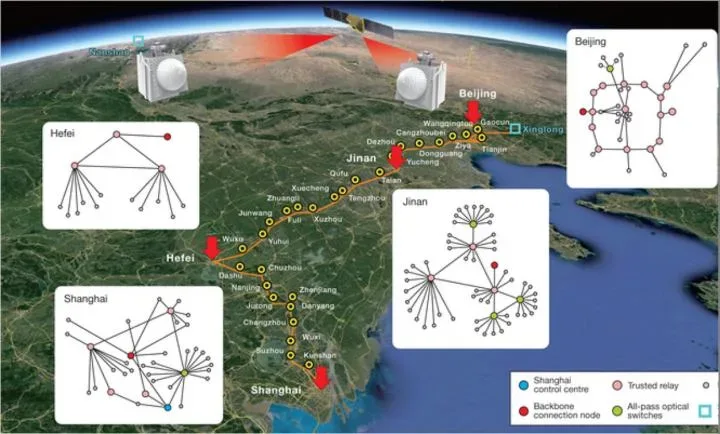A team led by Pan Jian Wei, Chen Yu Ao, and Peng Cheng Zhi from the University of Science and Technology of China in Hefei has established the first integrated quantum communication network in the world. It is comprised of more than 700 optical fibres and two ground-to-satellite links, achieving quantum key distribution over 4,600 kilometres across the large country. This was reported in the Nature magazine.
Quantum communication is currently considered unhackable and would make for an effective security system for use in transferring information. Banks, power grids, and other users will be able to leverage it for maximum security. Quantum communication employs quantum key distribution (QKD), using quantum states of particles such as photons to form strings made of zeros and ones. If there are hackers and malicious observers, they will be detected immediately. The most common QKD technology uses optical fibres over a few hundred kilometres, which is highly stable but has much channel loss. Another technology uses free space between satellites and stations on the ground for transmissions over thousands of kilometres away.
China managed to launch the first quantum communication satellite (QUESS, or Mozi/Micius) and QKD with two ground stations 2,600 kilometres apart was achieved. A year later, a 2,000 kilometre fibre network between Beijing and Shanghai for QKD was completed.
With the help of trusted relays, both networks were integrated to serve more than 150 Chinese users, from state and local banks to power grids and government websites. This shows the practicality of quantum communication networks in large-scale applications. If many networks around the world were combined, a global quantum network is possible. The many parties will have to work on standardizing hardware and software first, however.

In the past two years, the team tested the network extensively, improving its performance. It now has an improved clock rate and better QKD protocol, allowing satellite-to-ground QKD to reach an average rate of 47.8 kilobits per second. This is a boost of 40 times compared to the previous rate. With the help of twin-field QKD (TF-QKD), the scientists pushed the ground-based QKD record to more than 500 kilometres.
Pan Jian Wei and his team will then expand the network in China and with the country’s international partners from Austria, Russia, Italy, and Canada. They also intend to develop small-scale and cheaper QKD satellites and ground-based receivers that are efficient. The end goal is to build medium and high orbit satellites to achieve QKD over ten-thousand-levels.
The National Development and Reform Commission of China, the municipal governments of Shandong, Anhui, and Shanghai, China Banking Regulatory Commission, the Chinese Academy of Sciences, the Ministry of Science and Technology of China, and the National Science Foundation of China supported the team’s endeavours.

